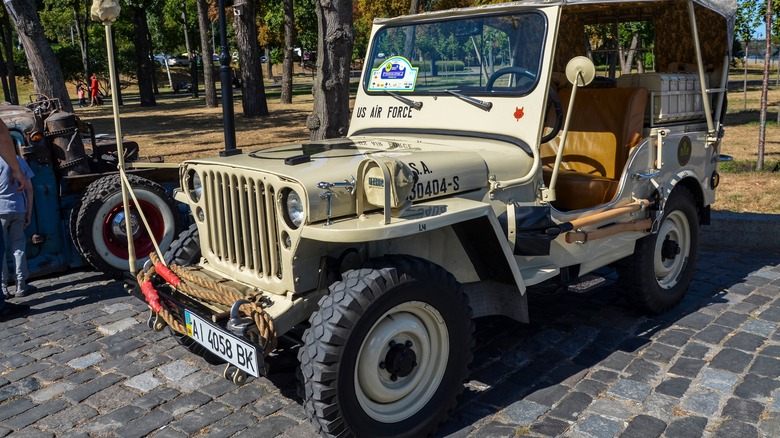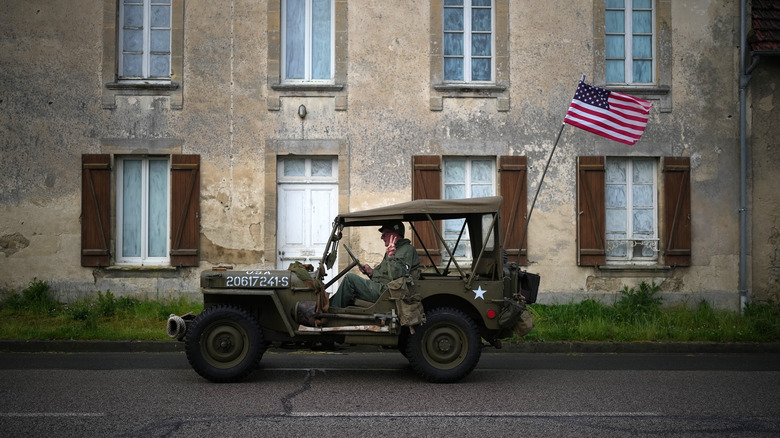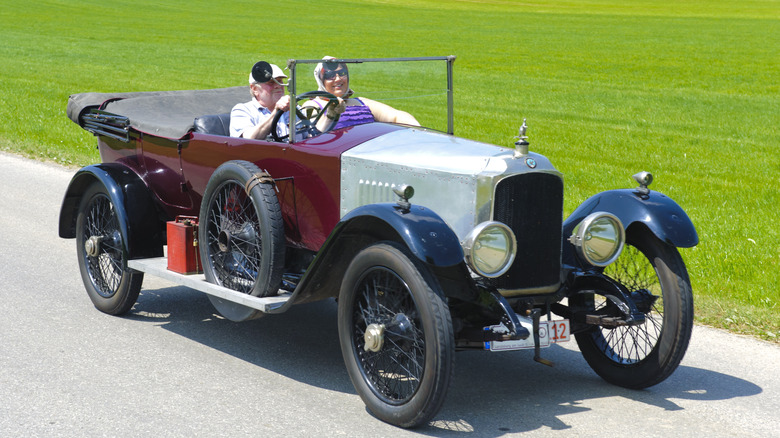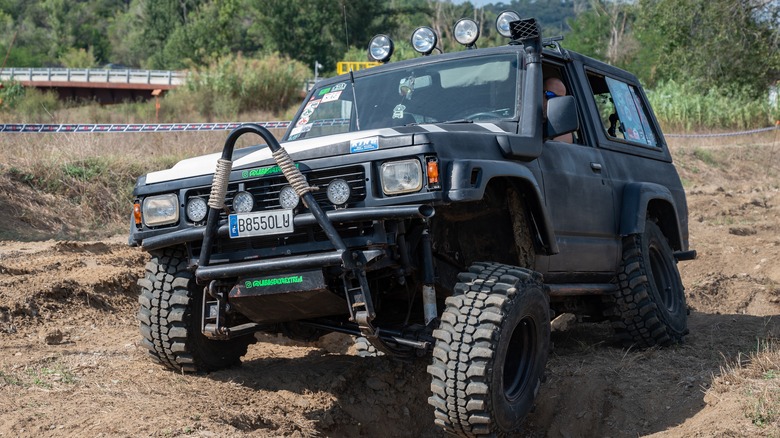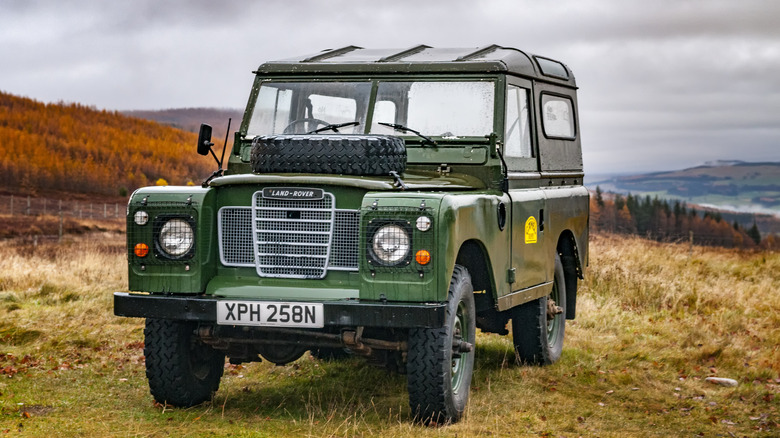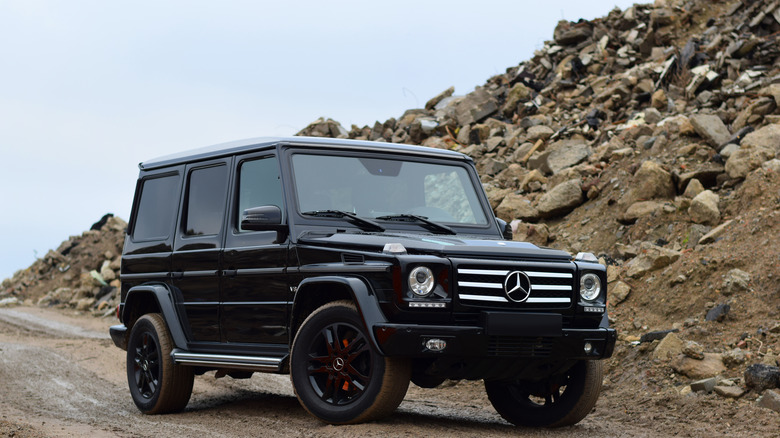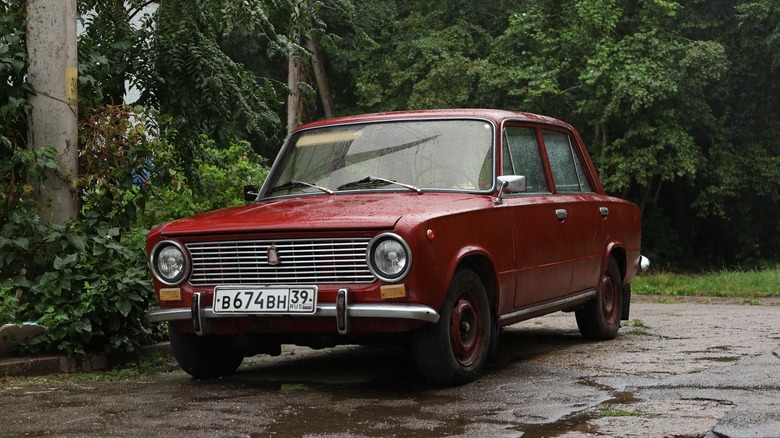6 Civilian Car Models Used By The Military
If there's one thing that immediately springs to mind when we think of the military, it would be highly advanced technology. Over the decades, we've seen some astonishing fighters, tanks, battleships, and a range of other vehicles, most equipped with state-of-the-art weaponry. That's not to mention the array of covert projects surely in development around the world which the general public isn't privy to. There's a good reason, of course, why military vehicles aren't available to the general public.
After all, a Challenger 2 tank or an F-35 Lightning II fighter would be a head-turning pick for your morning commute or school drop-off line, but more than a touch impractical. By the same token, a Chevrolet Spark may not quite be up to the demands of military forces on some of the toughest terrain around the globe. But the world's armed forces don't only use specialized and/or heavily-armed vehicles that are strictly off-limits to civilians. Sometimes, the most practical way to achieve military objectives is with vehicles you or I can buy for ourselves. All of these production models have been used by armed forces around the world at some point. Some of them aren't in active service any more, or are in the process of being phased out, but they've all had notable military roles to play.
Jeep MA/CJ
It's only right to kick things off with the Jeep, one of the most recognizable vehicles to ever blur the line between military and civilian utility. Jeeps were first developed for the U.S. Army in the early years of World War II. The Army had put out a nationwide call for a new light transport and reconnaissance vehicle. It needed to be sturdy enough to withstand difficult terrain and considerable punishment, but still relatively small.
The best option presented to the Army was the Willys Quad. The following year, the upgraded Willys MA became part of the United States' Lend-Lease program and joined the European and African theaters. It would go on, Jeep boasts, to become "a hero to thousands of Allied soldiers around the world." When the U.S. entered the war in late 1941, Jeeps became an important part of the Army's operations. General George C. Marshall later called the Jeep "America's Greatest Contribution to Modern Warfare," and the civilian CJ models that followed helped mechanize agriculture in the United States. Jeeps would change considerably over the next 70 years, but they retained the rugged heritage from their military beginnings.
Vauxhall D-Type
World War I had a tragic toll of an estimated 8.5 million human lives. According to the Animal Alliance of Canada, 8 million horses and 8 million other animals were also killed during the conflict. Countless other animal lives were saved by the emergence of motorized transportation, with the British Army's high-ranking staff often traveling in the Vauxhall D-Type. The D-Type began production in 1912 and got 60 horsepower from its inline four-cylinder engine by 1915. Civilian buyers got a three-year guarantee that included periodic inspections.
Throughout the First World War, around 1,500 D-Types were used by the British Army. Some of the military cars had enhancements such as an improved suspension in order to help these cars traverse the bumpy, muddy roads of the European front. The D-Type could hit 60 mph with a full complement of passengers, and was a hardy and reliable choice for the task at hand. It would be followed by the E-Type, or 30/98, a similarly capable model that entered production in earnest in 1919.
Nissan Patrol
Like the earliest Jeeps, the Nissan Patrol was designed and built with the military in mind. The first-generation Patrol was launched in Japan in 1951, and like Willys' earlier offering, certainly wasn't designed as a genteel, paved-roads-only kind of vehicle. Nissan literally aimed high from he very beginning, and the Patrol became the very first vehicle to ascend the beautiful and treacherous Mount Fuji.
Early versions of the Patrol were mostly used by Japan's military forces, but it would go on to see official use around the world as well as being adapted for civilian purposes. The Indian army was given a license to manufacture it as the Jonga — for Jabalpur Ordnance and Guncarriage Assembly — in the 1960s. The civilian version of the Patrol has grown more refined through several generational updates, and is still in production today. Customers in some markets can buy the high-performance Patrol NISMO, although it's not available in the United States.
Land Rover Defender
As with the Patrol, the Land Rover Defender has the perfect name for a military vehicle. Land Rovers have long been known for their ruggedness, and have been traditionally popular with the British royal family, particularly Queen Elizabeth II. She owned — among others — a Defender 100 which was "regularly driven" by the late monarch, according to Luxury Lifestyle Magazine. Land Rover was formed in 1948, and the following year the British Army placed its first order for a sample selection of Series 1 Land Rovers.
The Defender badge was introduced in 1990, with the Defender 90, 110 and 130 replacing the names of existing models. The 625-horsepower Defender Octa joined the lineup for 2025. In the military sphere, the Defender was eventually replaced by an upgraded version of the Defender that was rechristened as the Wolf. This two-ton model is equipped with a 111-horsepower engine and boasts strengthened axles and a body created in tandem with the British Ministry of Defense. This has made it a great fit for its wide range of roles — its versatile platform has allowed for the Wolf to be adapted into ambulances and snowplows.
Mercedes G-Class
Having entered the business way back in 1886, Mercedes claims that it has been making cars longer than any other manufacturer. It's produced some truly impressive models; the 500E, SLR McLaren, and 190E are considered some of the best Mercedes models ever built. Luxury is the watchword with Mercedes, so it might be difficult to see where a Mercedes offering would fit in with military applications. However, the G-Class is something rather unusual in the German brand's lineup.
The G-Class was designed to incorporate off-road prowess into the stylish aesthetic and potent power aspects of the Mercedes mold, and its capability and reliability made it valuable to military organizations. The appeal of a nimble general-service utility vehicle is common to many combat forces, and the G-Class has been used around the world. Development on the G-Class began in the early 1970s, and the Argentine Army was its first buyer in 1981. Since then, more than 40 countries have used the G-Class in a military role. Moving into the new millennium, the U.S. Marine Corps selected it as the basis for its Interim Fast Attack Vehicle, a sturdy 'regular' vehicle that could also be equipped with heavier weaponry where needed. The civilian version of the 2025 Mercedes G-Class got a major update, but retained the dependability and capability of its predecessors.
Lada Zhiguli
While most of the vehicles on this list are SUVs that were designed in some part with military functions in mind, our last entry is a more curious case. The Lada Zhiguli — or VAZ-2101 in some markets — has recently been pressed into service in Russia's war with Ukraine. The conflict has taken a tremendous toll on Russia's fighting machines, so the country has taken to using less conventional options. Russia has a history of creatively reusing vehicles — with one Soviet bomber being repurposed for the space program — but the Lada Zhiguli has much more humble roots.
The Zhiguli entered production in 1970 and was based on the Fiat 124. The model stayed in production until the 1980s, and was built of strong metal to help withstand the harsh weather in its home region. A station wagon "Combi" variant, the 2102, was also produced in the 1970s. As Russia's stocks of armored vehicles dwindled during the war, Zhigulis were pressed into service as assault and light troop transport vehicles. One instance of captured footage, Militarnyi reported, demonstrated that the Soviet-era cars have been modified. "The roof of the car has been cut off, the doors removed, and an anti-drone 'grill' with a camouflage net [was] welded in place of the roof."
